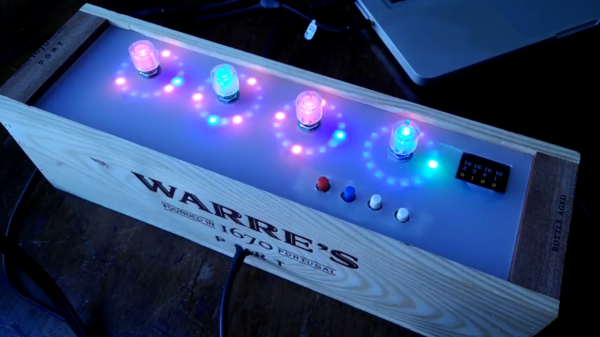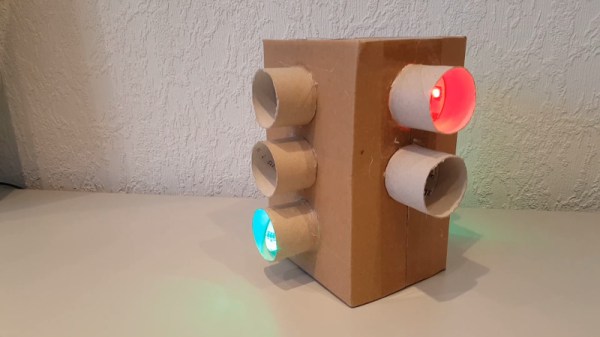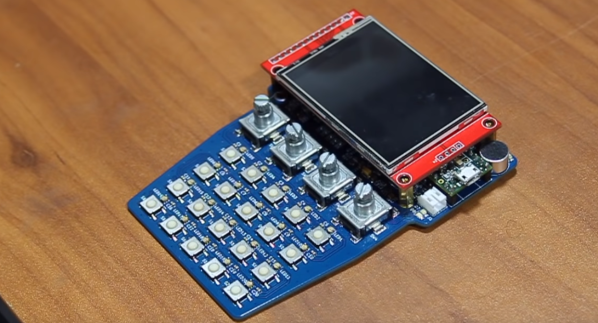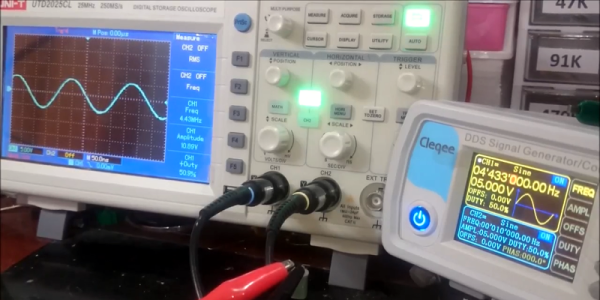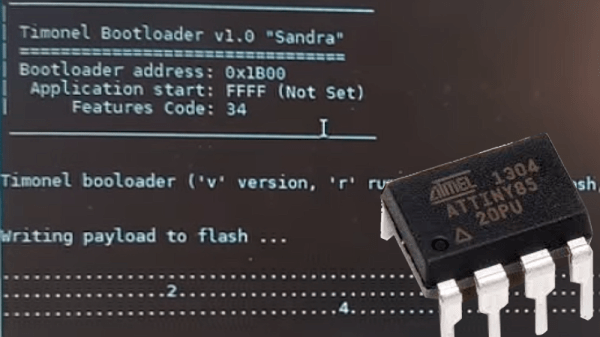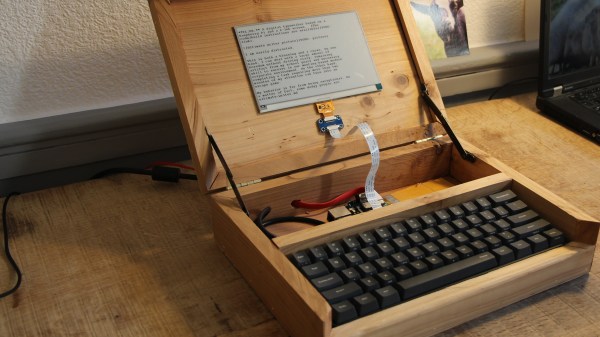Playing the drums is pretty hard, especially for the uncoordinated. Doing four things at the same time, all while keeping an even tempo, isn’t reasonable for most of us. Rather than hiring a drummer for your band who is well versed in this art, though, you might opt instead to outsource this job to a machine instead. It’s cheaper and also less likely to result in spontaneous combustion.
This drum machine is actually a MIDI Euclidean sequencer. Euclidean rhythms are interesting in their own regard, but the basics are that a common denominator between two beats is found in order to automatically generate complicated beats. This particular unit is running on a Teensy 3.5 and consists of four RGB rotary encoders, an SSD1306 LCD, four momentary buttons, and four 16 LED Neopixel rings. Setting each of the dials increases the number of beats for that particular channel, and it can be configured for an almost limitless combination of beats and patterns.
To really get a feel of what’s going on here, it’s worth it to check out the video after the break. MIDI is also a fascinating standard, beyond the fact that it’s one of the few remaining standards created in the 80s that still enjoys active use, it can also be used to build all kinds of interesting instruments like one that whacks wine glasses with mallets or custom synthesizers.
Thanks to [baldpower] for the tip!

